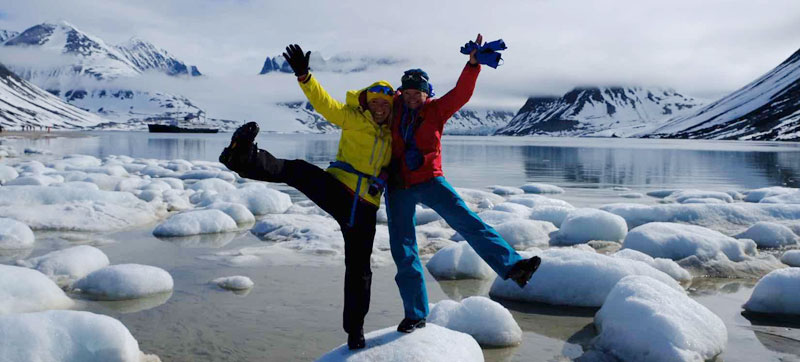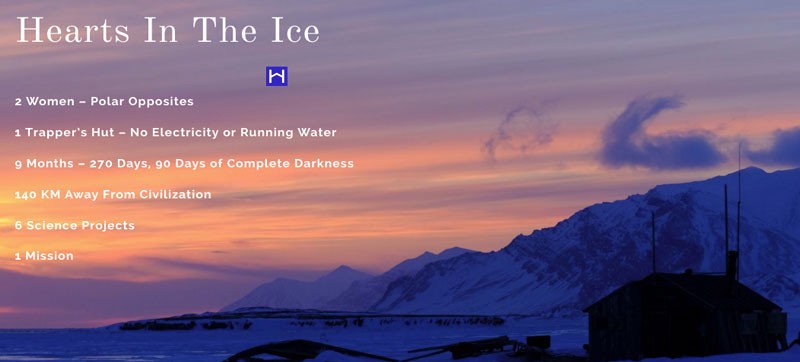I am an armchair explorer. Suffice it to say that I have awe and respect for those who attempt to extend our limits and conventions in any direction. As a child, I read fictional and historical adventure, and I marvel still at the accomplishments of those who in the pursuit of knowledge explored the outer reaches of our physical and psychological geography. Survival was not always certain, but its probabilities were always enhanced by knowledge, prior experience, and planning. One such expedition, for which the World Ocean Observatory participates as an advisor and sponsor, is Hearts in the Ice, a project created by two formidable women: Hilde Fålun Strøm from Norway and Sunniva Sorby from Canada who, in 2019, will inhabit the remote, historic trapper’s cabin Bamsebu in the High Arctic, at -78°N. in Svalbard, Norway, located 140 km away from the nearest neighbor, not counting the polar bears.
For 9 months beginning in August 2019 Hilde and Sunniva will live at Bamsebu where there is no running water or electricity. 270 days, 90 days of complete darkness, where they will serve as citizen scientists, collecting data for existing research being conducted in the Arctic. The project will serve as a platform for global dialogue and engagement concerning the changes we are experiencing in the Polar Regions which impact the world and what we all, individually, might be able to do about it. Life at Bamsebu will be broadcast and published via Iridium satellite through social media to scientists, school children, adventurers, and interested citizens from around the world. The World Ocean Observatory will extend their reach through regular updates to our audience through our millions of visitors and followers on social media.

These are two very competent women. Hilde has inhabited the Arctic her entire life. As wife, mother and grandmother, she has lived and worked in Svalbard for 23 years. Suniva’s experience has been mostly in the Antarctic. She was a member of the historic first Women’s South Pole Expedition in 1992/3, leader of the first Canadian Woman Expedition — Greenland Crossing in 1999, and leader of the first Canadian Woman Expedition George Island Crossing in 1998. These women are at home on the ice.
During their stay, they will undertake several citizen science research projects:
- Provide measurements, observations and data to The Norwegian Polar Institute and The Norwegian Meteorological Institute.
- Analyze the influence that the Gulf Stream has on the west coast of Spitsbergen through The Scripps Institute of Oceanography.
- Take observations for NASA that will help their satellites better understand how clouds assist in the overall changes in our climate.
- Collect as much plastic trash as possible from the area and neighboring beaches.
- Field test cutting edge technology in one of the world’s most extreme environments — from solar and wind energy, satellite communication, to electric snowmobiles.
- Discover how to minimize their carbon footprint in the most demanding conditions as a demonstration of methods and inspiration to others to do the same.

They will do science, live successfully without support, and invite us to into their home and activities in the distant, inaccessible High North. This is a unique opportunity for all of us to participate and to learn. So, all you armchair explorers, teachers and students, and everyone interested in knowledge and adventure, let’s share their experience, send our support, follow the project on heartsintheice.com, at worldoceanobservatory.org and on social media. Join with Hilde and Sunniva in a spectacular place apart, in the fullness of wilderness and Nature, and in the spirit of inquiry and inspiration to be found in the ice, in the heart of exploration.

PETER NEILL is founder and director of the W2O and is author of The Once and Future Ocean: Notes Toward a New Hydraulic Society. He is also the host of World Ocean Radio upon which this blog is inspired.


